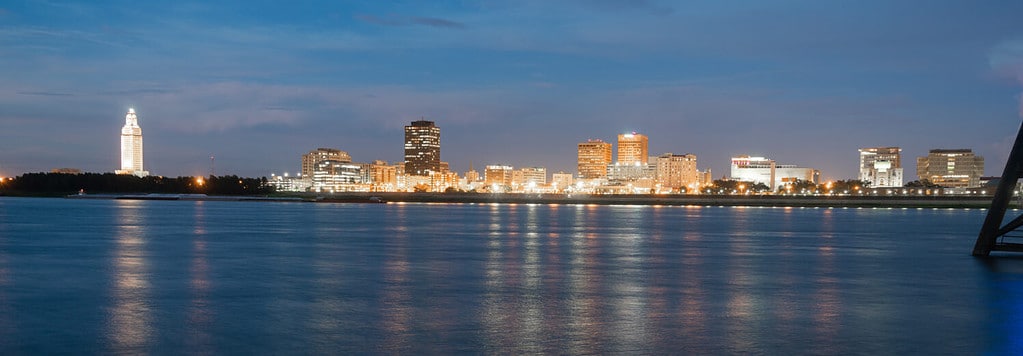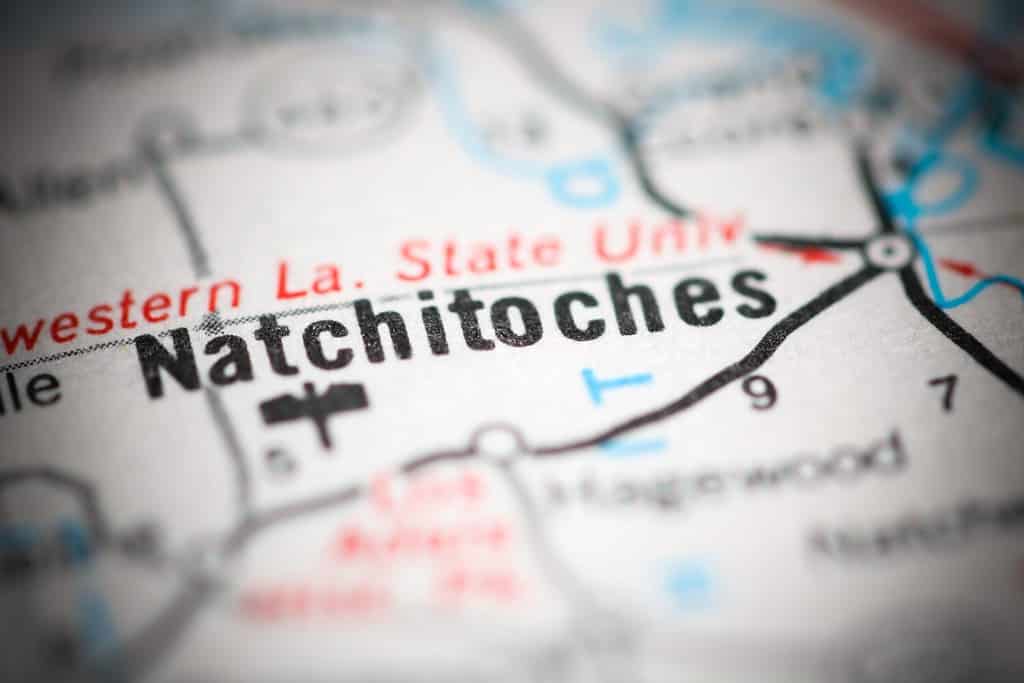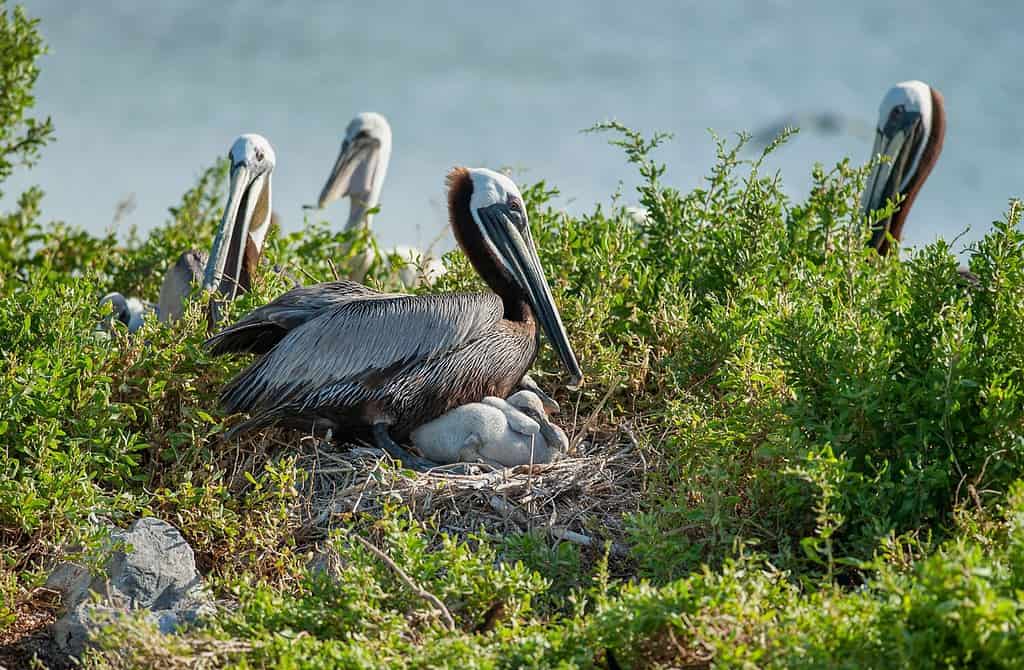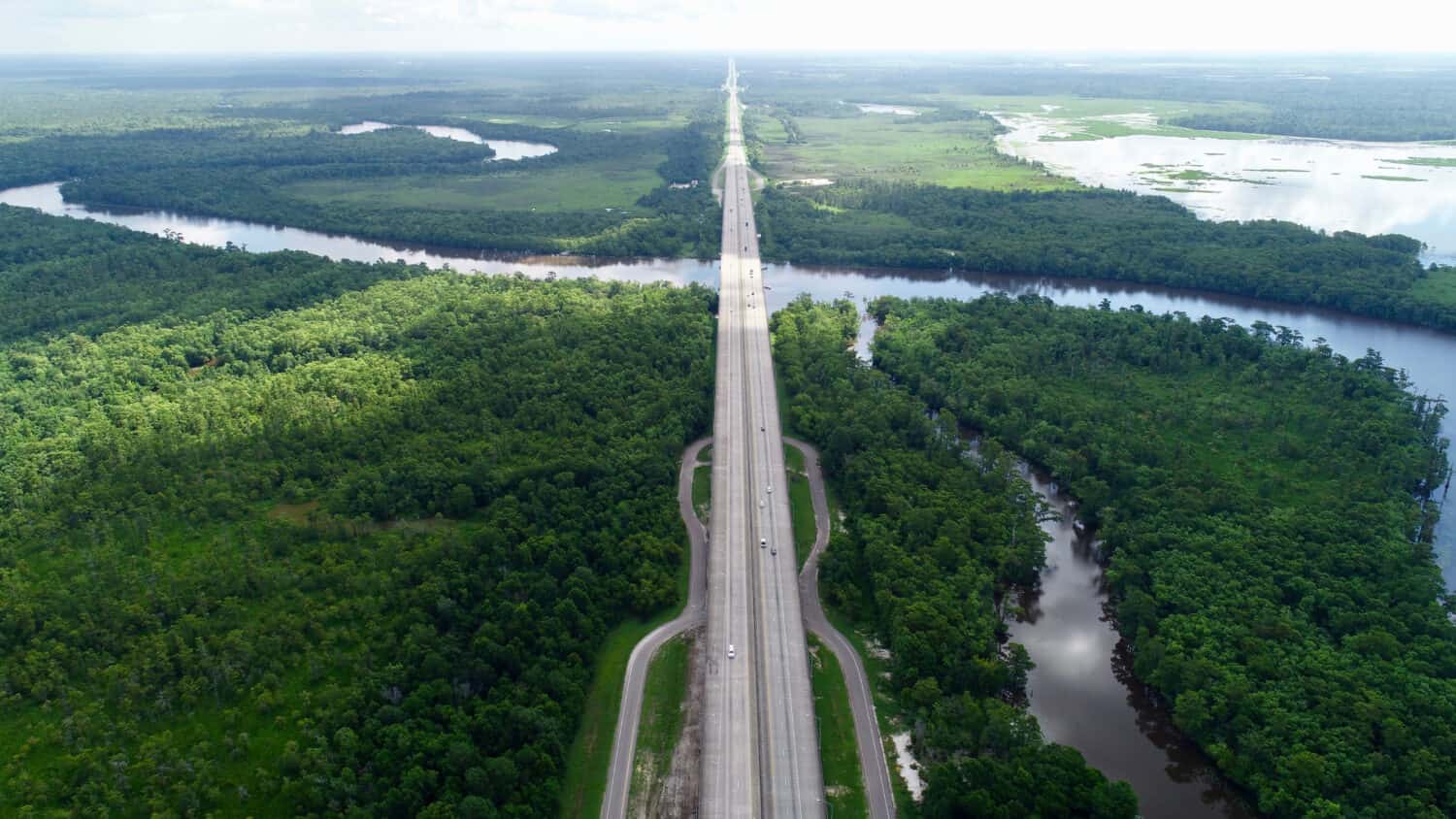Louisiana is one of the southernmost states in the United States. It rests between Texas and Mississippi on the Gulf Coast. The state holds numerous wonders, despite a history of tragedy that has swept many of those wonders out to sea. Today we’ll be taking a look at one aspect of the state’s size – its height. We’ll explore how tall Louisiana is from north to south, along with providing some other helpful information and history on the Pelican state. Maybe we’ll even give you a good reason to go visit. After all, Louisiana isn’t just the home of New Orleans or the birthplace of American Blues music. It is also a wonderful place to explore a unique wildlife habitat – the Bayou.
About Louisiana

The capital of Louisiana is Baton Rouge.
©Real Window Creative/Shutterstock.com
Louisiana is both a deep south state and a southern-central state. It shares a northern border with Arkansas, a western border with Texas, an eastern border with Mississippi, and a southern border with the Gulf of Mexico. It is famous for a number of things including Cajun and Creole cooking and culture, jazz music, and a massive Mardi Gras festival in New Orleans. The state houses the mouth of the Mississippi River – North America’s largest watershed. The river meets the Gulf of Mexico about 100 miles south of New Orleans, Louisiana.
The state has incredibly strong French-colonial influences. Louisiana presently observes the Creole culture as the result of a mix of heritages – French, African American, and Native American. A variety of Creole languages exist and they are all based on the French language. However, it is the addition of other languages that makes Creole so distinct. ‘Creole’ is considered to be an ethnic group, and a wide variety of languages inside of this definition add to the unique culture that surrounds Louisiana. For example, you may be introduced to Haitian Creole, Jamaican Creole, and Louisiana Creole languages.
Louisiana’s culture is based deeply on religion and spirituality, music, and food. Its industry relies heavily on petroleum refining and drilling and gas extraction. The population of Louisiana is 4.62 million as of the 2021 census. The capital of Louisiana is Baton Rouge.
Early History of Louisiana

The oldest permanent settlement in Louisiana is Natchitoches – established by the French in 1714.
©SevenMaps/Shutterstock.com
Northern Louisiana is home to a lot of ancient Indigenous history, including a series of mounds built by ancient hunter-gatherers. Historians believe that the Poverty Point Culture is the first and oldest complex tribal culture in North America. This culture originated in Louisiana and dates back to late Archaic times. Poverty Point is actually a historic site in northeastern Louisiana. At this site, visitors can still observe prehistoric earthwork erected by this culture.
It would take far too long to explore the vast and intricate history of all of the Indigenous tribes that predate colonialism. We can say that, without the influences of these tribal cultures, Louisiana would not be the state it is today. Much of North America relies on a history that colonists and settlers destroyed to build modern-day America. In most places, only the names describing this history remain.
Let’s jump forward to 1528 when the first European settlers arrived in the area. This Spanish expedition located the mouth of the Mississippi River and traversed it north. In 1542, another Spanish exploration probed the northern and western aspects of the state before following the Mississippi River down to the Gulf of Mexico. This was the first and last of the explorations until the 17th century.
During the 17th century, new explorers came to Louisiana. French explorers made it to the region in 1682 and named it “Louisiana” in honor of King Louis XIV. It was also the French who built the first permanent European settlement in Louisiana. This was at Fort Maurepas in 1699. The French claimed a large portion of North America at this time and had settlements from the deep south all the way to Canada. The oldest permanent settlement in Louisiana is Natchitoches – established by the French in 1714.
French Rule and the Expansion of Slavery
By the 1700s, Louisiana was split between the French and the Spanish. Slavery was introduced to Louisiana as early as 1708. This was the beginning of the slave trade in Louisiana and enslaved peoples were transported in high volume into and through the state by 1719. By 1721, the French colony of New Orleans had a population of over 1,200, and over half of these were enslaved Africans. French slave owners faced a series of requirements under the “Code Noir” act of 1724. These requirements included providing religion to the enslaved people of the area and granting them a day of rest on Sundays. This is not to say that the French were kind to their enslaved peoples. The colonies were wrought with cruel and unusual laws and punishments specifically targeted toward the oppressed members of the colonies.
The French maintained control of Louisiana until 1763. The French portion territory was then ceded to the British following the Seven Years’ War and became “British West Florida”. This did not end the reign of slavery in the deep south. In fact, British interests pushed even more destructive policies on the enslaved members of the area. Due to this and the easy access to Louisiana via the Mississippi River, New Orleans became a hub for the slave trade. By 1840, New Orleans was the richest and most prosperous city in North America, built on the back of the largest slave trade in the nation. This trade didn’t die until the 1864 constitution that abolished slavery.
Independence From Britain and Statehood
Louisiana achieved independence from British rule in 1783. The United States gained control of Louisiana in the Louisiana Purchase of 1803. The purchase acquired the Louisiana Territory for the United States, doubling its area overnight in an acquisition that cost about 3 cents per acre.
In 1804, the territory was divided into two parts – the Territory of Orleans and the District of Louisiana (later the Louisiana Territory). The Territory of Orleans became the State of Louisiana in 1812. The Louisiana Territory was renamed the Missouri Territory the same year. Louisiana officially attained statehood as the 18th state in the United States on April 30th, 1812.
How Tall is Louisiana?
Louisiana is 379 miles long from north to south. The distance between Ida, Louisiana, a town on the border of Louisiana and Mississippi in the northeast corner of the state, to Venice, Louisiana in the far southeastern region covers 430 miles and takes almost 7 hours. Venice is the last town you can drive to on the southeastern peninsula of the state. It is directly next to the Mississippi River and overlooks the beginning of the mouth of this mighty river. We’ve included a map of this point in order to point out the wonder of the geography of the state.
Now, let’s take a look at how Louisiana stacks up in height against other states. Here’s a table of other states with similar lengths.
| State | Length (In Miles) |
|---|---|
| Mississippi | 340 miles |
| Alabama | 330 miles |
| Michigan | 456 miles |
| Minnesota | 406 miles |
| Illinois | 385 miles |
Wildlife in Louisiana

Louisiana is called “The Pelican State” due to the sheer number of pelicans that inhabit it, adopting the brown pelican as its state bird in 1966.
©Bonnie Taylor Barry/Shutterstock.com
There is so much wildlife to observe when you visit Louisiana. As we stated before, the state possesses a unique biome that offers a home to a variety of species – especially waterfowl. So, what kinds of animals can you see when you visit the Bayou? Alligators, pelicans, and nutria all live in the Bayou, along with great blue herons, roseate spoonbills, and osprey.
Louisiana is called “The Pelican State”. This is due to the sheer number of pelicans that inhabit it. The brown pelican and the American white pelican both call the bayou their home. The state adopted the brown pelican as its state bird in 1966.
Louisiana is also a great shrimping state. Bayous provide a perfect biome for shrimp, including white shrimp and brown shrimp. Outside of the bayou, you can find a number of other wildlife wonders.
Additionally, one of the oldest breeds of dog in North America originates in Louisiana. The Catahoula leopard dog is a beautiful breed of dog whose origin seems to be in the crossbreeding of Spanish war dogs and Louisiana Indigenous dogs. While these dogs don’t qualify as “wildlife”, they are still a very important part of Louisiana’s animal culture.
Thank you for reading! Have some feedback for us? Contact the AZ Animals editorial team.








